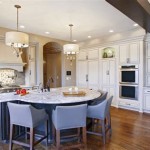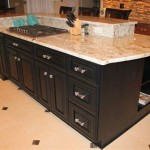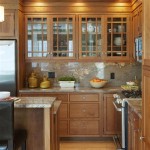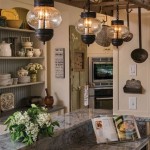Hanging Pot Racks: Enhancing Kitchen Functionality and Aesthetics
Hanging pot racks represent a functional and visually appealing addition to any kitchen space. They offer a practical solution for organizing cookware, freeing up valuable cabinet and counter space, while simultaneously contributing to the overall aesthetic of the kitchen. These racks come in a variety of styles, materials, and sizes, ensuring compatibility with diverse kitchen designs and spatial constraints. Understanding the benefits, variations, installation considerations, and maintenance requirements of hanging pot racks is crucial for making an informed decision regarding their implementation.
Space Optimization and Organization
The primary benefit of a hanging pot rack lies in its ability to optimize kitchen space and improve organization. Kitchens, particularly smaller ones, often suffer from limited cabinet and drawer space. Pots and pans, due to their size and shape, can consume a considerable amount of storage area, leading to clutter and difficulty in locating specific cookware. A hanging pot rack effectively addresses this issue by relocating cookware to an overhead position, thereby freeing up existing cabinet and drawer space for other essential kitchen items, such as food storage containers, small appliances, or utensils.
The open display nature of a hanging pot rack also allows for a more organized and accessible arrangement of cookware. Instead of rummaging through cluttered cabinets, cooks can easily identify and retrieve the specific pots and pans needed for a particular recipe. This streamlined accessibility saves time and effort, enhancing the overall cooking experience. Furthermore, the visual arrangement of the cookware can contribute to a more organized and efficient workflow in the kitchen.
Different types of pot racks offer varying organizational capabilities. Grid-style racks provide a large surface area for storing a wide range of cookware, while ladder-style racks are ideal for hanging pots and pans in a linear fashion. Circular racks can be effective for utilizing corner spaces, and custom-designed racks can be tailored to meet specific storage needs and spatial limitations. The choice of pot rack style should consider the available space, the quantity and type of cookware to be stored, and the desired aesthetic.
Aesthetic Enhancement and Design Integration
Beyond their functional benefits, hanging pot racks contribute significantly to the aesthetic appeal of a kitchen. They can serve as a focal point, adding visual interest and character to the space. The exposed display of cookware can create a sense of warmth and personality, transforming a purely functional area into a more inviting and stylish environment.
The diverse range of styles and materials available in hanging pot racks allows for seamless integration with various kitchen design themes. For example, a wrought-iron pot rack can complement a rustic or farmhouse-style kitchen, while a stainless steel rack can enhance a modern or industrial-themed space. Copper pot racks add a touch of elegance and sophistication, while wooden racks create a warm and natural feel. The choice of material and finish should align with the overall design aesthetic of the kitchen to ensure a cohesive and visually appealing result.
The arrangement of cookware on the rack can further enhance its aesthetic impact. Arranging pots and pans by size, material, or color can create a visually pleasing display. Incorporating decorative elements, such as hanging plants or kitchen utensils, can add further interest and personality to the rack. The strategic placement of the pot rack within the kitchen is also crucial. Positioning it above an island or peninsula can create a central focal point, while placing it against a wall can maximize space utilization and visual impact.
Installation Considerations and Structural Integrity
Proper installation is paramount to ensure the safety and stability of a hanging pot rack. The weight of the cookware, combined with the weight of the rack itself, can exert significant stress on the mounting structure. Therefore, it is essential to anchor the rack securely to ceiling joists or wall studs to prevent it from collapsing. Failure to properly secure the rack can result in damage to the ceiling or walls, and potentially cause injury.
Before installing a hanging pot rack, it is crucial to identify the location of ceiling joists or wall studs. A stud finder can be used to locate these structural elements accurately. The mounting hardware should be appropriate for the type of surface being used, whether it is drywall, plaster, or wood. Heavy-duty screws or bolts should be used to ensure a secure and reliable connection.
The height of the hanging pot rack should be carefully considered to ensure that it is within easy reach while avoiding obstruction of the line of sight or interference with overhead cabinet doors. A general guideline is to position the rack at a height that allows for comfortable access to the cookware without requiring excessive reaching or bending. It is also important to ensure that the rack is level to prevent the cookware from sliding or swinging.
For heavier pot racks or installations where ceiling joists are not readily accessible, it may be necessary to consult with a professional contractor or handyman. A professional can assess the structural integrity of the ceiling or walls and recommend the appropriate mounting techniques and hardware to ensure a safe and secure installation. This is particularly important for older homes or buildings with potentially weakened structural elements.
Material Selection and Durability
The material used in the construction of a hanging pot rack significantly impacts its durability, aesthetics, and maintenance requirements. Common materials include stainless steel, wrought iron, copper, and wood, each offering distinct advantages and disadvantages.
Stainless steel pot racks are known for their durability, resistance to corrosion, and ease of cleaning. They are a popular choice for modern kitchens due to their sleek and minimalist appearance. Stainless steel is also a hygienic material, making it suitable for food preparation environments. However, stainless steel can be more expensive than other materials, and it may require polishing to maintain its shine.
Wrought iron pot racks offer a classic and rustic aesthetic, adding character and charm to a kitchen. Wrought iron is a strong and durable material, capable of supporting heavy loads. However, it is susceptible to rust if not properly protected. Regular cleaning and application of a protective coating can help prevent rust and maintain the appearance of wrought iron.
Copper pot racks exude elegance and sophistication, adding a touch of warmth and luxury to a kitchen. Copper is a naturally antibacterial material, making it a hygienic choice for cookware storage. However, copper can be expensive and requires regular polishing to maintain its shine. Over time, copper will develop a patina, which some people find desirable while others prefer to maintain a polished appearance.
Wooden pot racks offer a warm and natural aesthetic, complementing a variety of kitchen design themes. Wood is a relatively inexpensive material, making it an attractive option for budget-conscious homeowners. However, wood is susceptible to moisture damage and may require regular sealing or painting to protect it from warping or cracking. The type of wood used also affects its durability and resistance to wear and tear.
Weight Capacity and Load Distribution
Understanding the weight capacity of a hanging pot rack is crucial to prevent overloading and potential structural failure. Each rack is designed to support a specific maximum weight, which is typically specified by the manufacturer. Exceeding the weight capacity can compromise the stability of the rack and potentially lead to its collapse.
The weight capacity of a pot rack depends on several factors, including the material used, the design of the rack, and the strength of the mounting hardware. Heavy-duty racks made of steel or wrought iron typically have a higher weight capacity than lighter racks made of wood or aluminum. The design of the rack, such as the number of support bars or the thickness of the frame, also affects its ability to support weight.
Proper load distribution is also essential to prevent uneven stress on the rack. Distributing the weight of the cookware evenly across the rack can help to ensure that no single point is overloaded. Avoid concentrating heavy pots and pans in one area of the rack, as this can create excessive stress on the mounting structure.
Regularly inspect the pot rack for signs of stress or damage, such as bending, cracking, or loosening of the mounting hardware. If any signs of damage are detected, take immediate action to repair or replace the rack. Overloading the rack can also damage the ceiling or walls, so it is important to monitor the area around the rack for any signs of stress or movement.
Maintenance and Cleaning
Regular maintenance and cleaning are essential to keep a hanging pot rack in good condition and prolong its lifespan. The frequency of cleaning will depend on the material of the rack and the environment in which it is located. However, a general rule of thumb is to clean the rack at least once a month to remove dust, grease, and other debris.
The cleaning method will also depend on the material of the rack. Stainless steel racks can be cleaned with a mild detergent and water, followed by a polishing with a stainless steel cleaner to maintain their shine. Wrought iron racks can be cleaned with a dry cloth or brush to remove dust and debris. If rust is present, it can be removed with a wire brush or steel wool, followed by an application of a rust-preventative coating.
Copper racks require regular polishing to maintain their shine. A copper cleaner can be used to remove tarnish and restore the copper's luster. Wooden racks can be cleaned with a damp cloth and mild detergent. Avoid using excessive water, as this can damage the wood. If the wood is sealed or painted, a furniture polish can be used to maintain its appearance.
In addition to regular cleaning, it is important to inspect the pot rack periodically for loose screws or bolts. Tighten any loose hardware to ensure the stability of the rack. Also, check the mounting hardware to ensure that it is securely anchored to the ceiling or walls. If any signs of damage or wear are detected, take immediate action to repair or replace the affected components.

Simple Functional Ways To Decorate A Hanging Pot Rack Open Doors Hearts

31 5 In Black Ceiling Hanging Pot Rack And Pan With 12 Hooks Multi Purpose Cookware Organizer For Kitchen C5l1b6p2

Range Kleen Hanging Oval Pot Pan Kitchen Ceiling Rack Organizer Stainless Steel

Mygift 36 Inch Wall Mounted Black Metal Kitchen Cookware Storage Rack Floating Pot Hanger Shelf With 12 Removable Hooks

Simple Functional Ways To Decorate A Hanging Pot Rack Open Doors Hearts

Pot Racks The Ultimate In Chic Kitchen Organization Architectural Digest

Unlacquered Solid Brass Hanging Pot And Pan Kitchen Rack Organizer Hook Rail Hooks For Etsy

32 Pot Pan Rack With Shelf Grid 9 Hooks Decorative Wall Mounted Storage Hanging Ceiling Multi Purpose Cookware Hanger Organizer

Chain Suspended Farmhouse Hanging Pot Rack Made With Reclaimed Wood And Pipe Kitchen Shabby Chic Steampunk Hooks Etsy

Need More Kitchen Storage A Hanging Pot Rack Could Be The Key Real Estate News Insights Realtor Com
See Also








